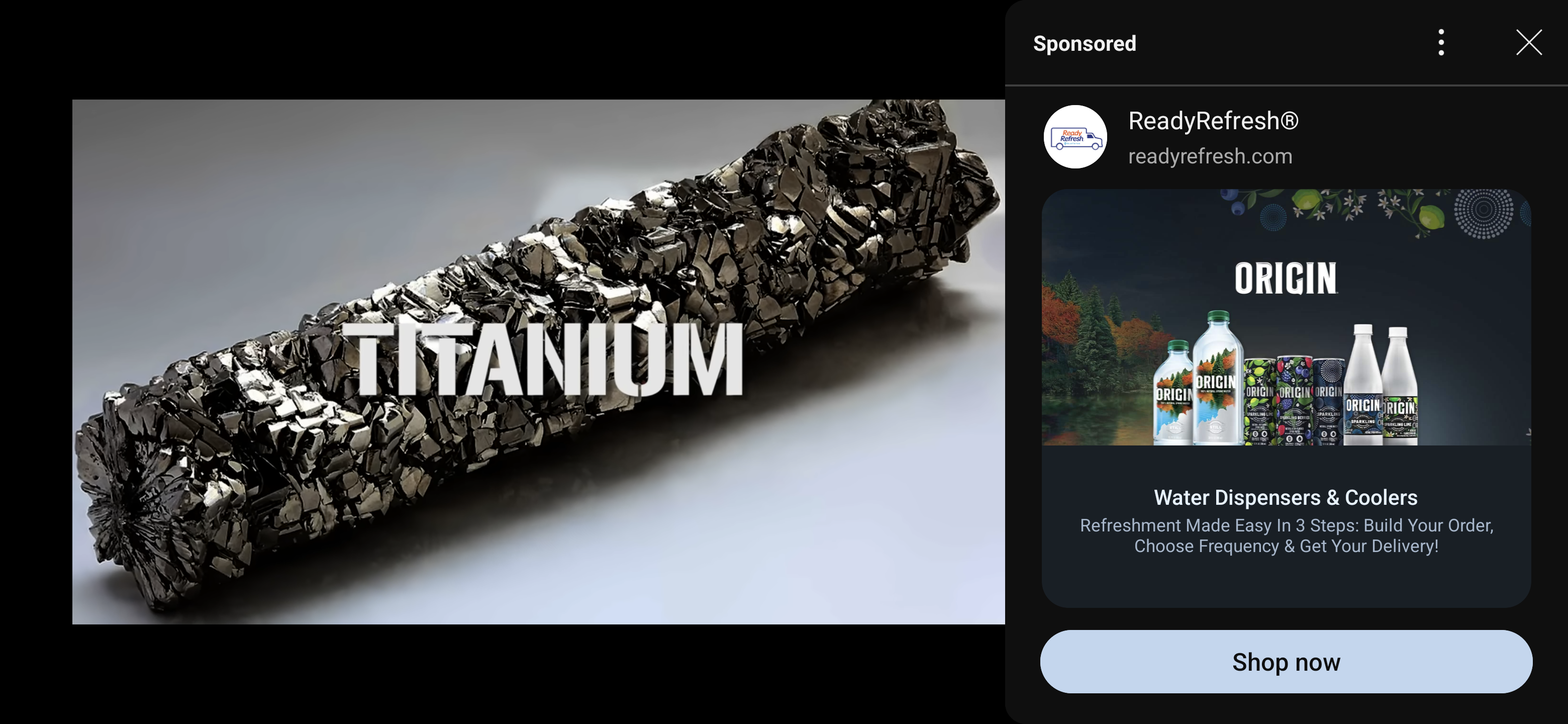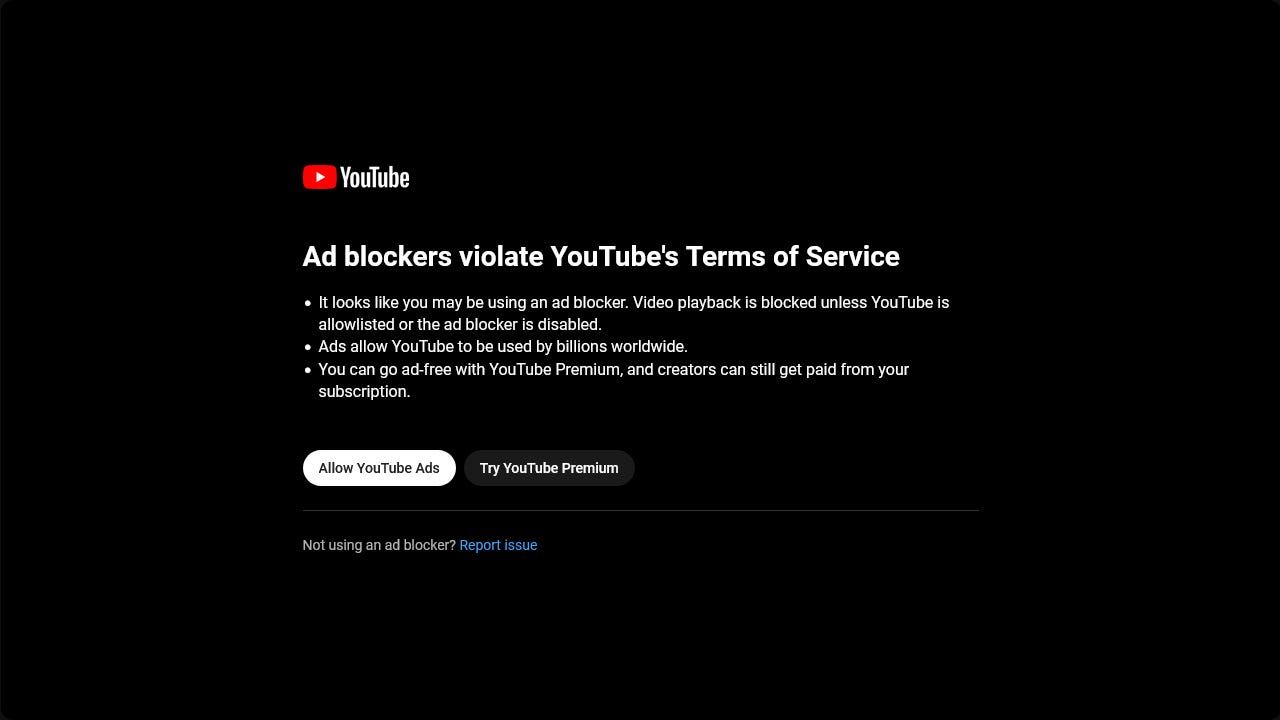I’m sure you’ve heard that YouTube is no longer allowing content blockers on its platform. Developers of these content blockers and YouTube have been trying to one-up each other for years. This minor arms race is coming to a head now.
How this Game of Cat and Mouse Started
Ads on YouTube are worse than ever—in quantity and quality. I recently sat through two unskippable ads before a thirty-second clip. Then a mid-roll ad every five minutes on a long tutorial video. YouTube is either serving ads for Grammarly or ads for fake mobile video games, pyramid schemes, and crypto scams. You can block some of those, by the way.
The Ads Keep Getting More Intrusive
YouTube is always concocting new kinds of ads. Think pre-roll ads, mid-roll ads, unskippable ads, banner ads, overlay ads, vertical ads, bumper ads, shopping ads, ad breaks during live streams, and hidden sponsorship ads. Now that YouTube is even trying to push ads on pause screens, it’s hard to imagine there was a time when YouTube didn’t have any ads whatsoever. The whole focus was just giving people a platform to “broadcast” themselves.
But all good things must come to an end. And for YouTube, that end came in the shape of Google, which acquired the platform in 2006 and introduced ads.
The early ad formats were pretty benign. YouTube called them “Participatory Video Ads” or PVA, which interested viewers could click to watch exclusive content from brands like music albums and TV show clips. There were also minimalist text-based banner ads, and promos spread across the page, occasionally accompanied by graphics. They mostly stayed out of your way.
Eventually, YouTube turned its attention to the video player itself and started overlaying those banner ads directly onto the videos. Around 2010, pre-roll ads (the video ads that play before a video starts) started popping up before some videos. It wasn’t as frequent, though. Longer but skippable ads also rose around that time.
We don’t see them as often now, but banner ads on YouTube’s homepage also became common back then. With unskippable ads, vertical video ads on mobile, and now pause screen ads, YouTube has shoved ads almost everywhere it can.
The point I’m trying to make is this: ads on YouTube have progressively become insufferable. And they’re only going to get worse (more on that in a bit).
YouTube Is Going After Ad Blockers Now
It’s no wonder that people use ad blockers on YouTube. It’s hard to estimate what percentage of YouTube visitors have ad blockers enabled, but only 30% of people worldwide have ad blockers installed on their computers (not counting mobile users). So, it’s safe to say it wasn’t an overwhelming number. But Google decided it’s affecting the bottom line enough to bring the hammer down on Adblock users.
People with ad-block enabled started seeing a wall inside the video player with warnings that ad-blocking isn’t allowed on the platform. It forces them to disable the ad-blocker if they want to watch the video. YouTube also added an artificial 5-second lag for ad-block users across all browsers.
This crackdown on content blockers is a part of YouTube’s strategy to push the premium subscription. The subscription service is mostly built around withholding basic core features (many of which used to be free). Background listening, downloading high-quality videos on mobile, high-quality streams, and even queuing up videos on mobile are now locked behind a paywall.
YouTube creates the problem and sells you the solution. From YouTube’s perspective, pushing more ads and banning ad blockers either means more revenue from ads or more premium subscriptions. It sounds like a win-win. But I think this strategy is going to backfire.
You Wouldn’t Steal A Car
When YouTube first introduced its anti-ad-block wall, ad-block developers updated their software to circumvent the wall. That’s how we got anti-anti-adblock scripts. So it’s clear that ad-blockers are fighting back, and YouTube hasn’t won (yet, anyway).
Secondly, and more importantly, YouTube’s strategy to discourage people from using ad-blockers is going to have the opposite effect. Let me tell you why.
Back in the day, there was a huge public campaign against digital piracy that opened with “You Wouldn’t Steal a Car!” It equated illegally downloading a movie with stealing an actual car, handbag, or TV and shoplifting, which the internet (understandably) turned into a meme.
Curiously enough, it also led to a dramatic rise in online piracy. In the early years of the internet, not everyone knew you could just download music and movies from the internet for free. So, ironically, it made people more likely to pirate. Researchers even did a study on the phenomenon.
That’s the same path YouTube is heading down with its aggressive anti-Adblock campaign. I explored Google Trends for searches related to blocking ads on YouTube, and they’re pretty steady over the years except for some huge spikes around September and October 2023 when YouTube widely rolled out the anti-adblock wall.
I tried multiple keywords and found the same results.
AllAboutCookies noticed a 336% jump in traffic on their YouTube ad-blocker pages. They also conducted a survey and found that 22% of ad block users were more likely to install advanced ad blockers after finding out about YouTube’s anti-adblock wall, and 52% refused to pay YouTube anything.
That’s why YouTube’s plan for kicking ad blockers off the platform is going to backfire. A lot more people are finding out about ad-blocker software, and it’s only making the software more sophisticated. Besides, people who use ad blockers are much less likely to click on an ad in the first place.
So far, it seems like ad-block companies and developers are staying one step ahead of YouTube, but the tech giant might have a kill move up its sleeve.
YouTube Is Working On A Kill Move
YouTube recently started experimenting with an entirely new kind of ad format called server-side ad injection. Instead of serving an ad ahead of or in the middle of a video, YouTube has started injecting ads directly into the stream. It makes the ad a part of the YouTube video, rendering ad-blockers totally useless since they can’t tell the video content apart from the ad.
People have already reported seeing ads despite active ad-blockers. Server-side injection might finally manage to hamstring content blockers on YouTube.
That’s not to say that YouTube has definitely won. Developers are working on outsmarting server-side injection. One solution could be detecting ad content using AI and automatically fast-forwarding to the video content.
It’s unclear how far this escalation will go, but it is clear that ads on YouTube are only going to get more annoying to deal with unless you cough up 14 bucks a month.






